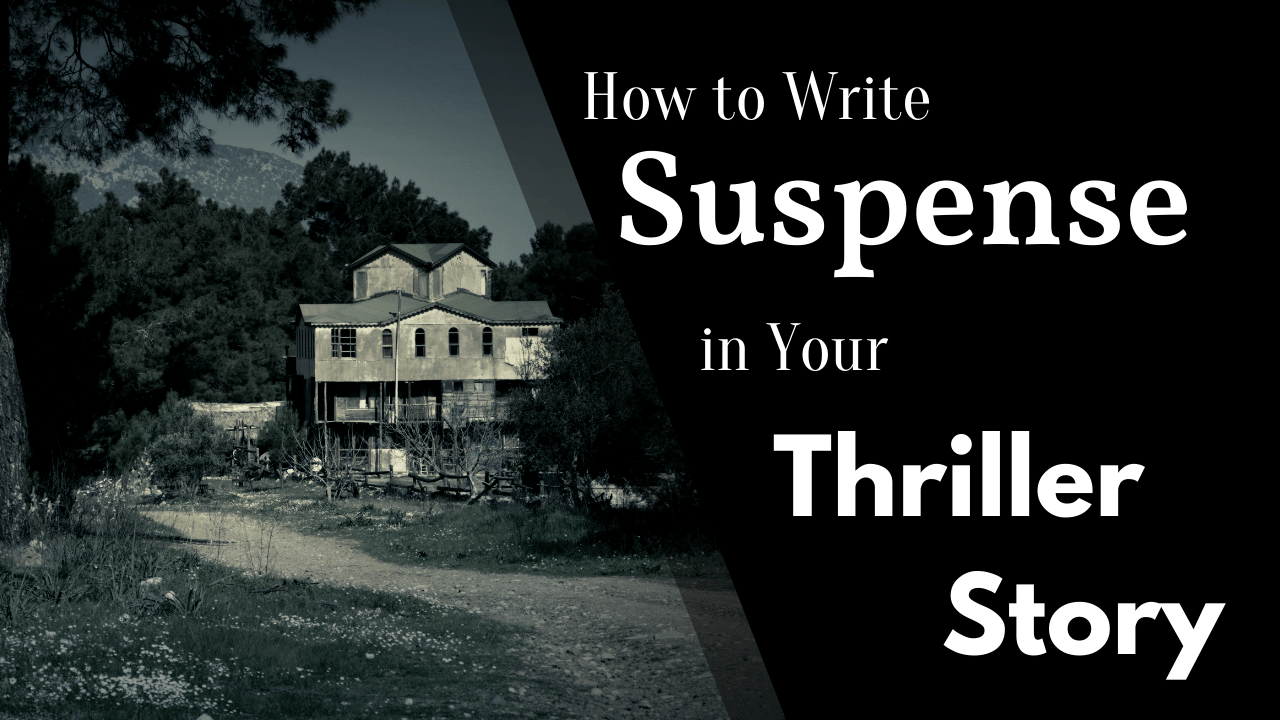Latest Writing Video! |
|
Suspense has always played a major role in dark stories. Thriller, horror and even dark fantasy often make use of suspense to emphasise the feeling of dread. Whether it is a high energy scene such as a chase or a low energy scene such as an investigation in a creepy house, suspense plays a part in telling a thrilling tale. Here are some of my key rules for writing suspense. Pin for Later!1. Keep Your Reader GuessingPersonally, this rule is a must no matter what scenario. I typically write thriller and horror stories. Even when writing a lighter novel I still find myself going back to the dark void for inspiration. It usually suggests I make an unknown threat and make it scary. Yet, when I write suspenseful scenes, I don’t give the reader any hints. Only I know what goes bump in the dark in my story, yet they are better off, or should I say worse off, not knowing. The human mind can think up something far worse than anything you come up with when feeling inspired. Of course, that doesn’t mean they will. Which is why when writing a suspenseful scene, I put the reader to work by giving them vague hints. I let the reader know there is a threat, an invisible danger. I create distrust, I create fear, but I hold off on who or what the threat may be. In other words, I keep them guessing. I have the darkness of the reader’s mind ponder what could be so evil, so dangerous. Maybe the monster I have in mind is scarier, which makes me happy. However, maybe my monster is not so terrifying, but I still garnished the reader’s fear, their sense of absolute dread. 2. Don’t Force SuspenseThe next tip is simple in concept, difficult in practice. When writing any scene, be it suspenseful or not, you should never force yourself. However, it goes doubly so for suspense scenes. With other scenes, you might mess up a description or create a hollow dialogue. Unless it is a major part of your story, it’s no big deal and could even be rectified if it is too glaring of a problem. Sound familiar? However, with a suspense scene, every detail goes a long way towards establishing the right ambience, the right emotional states of characters. All this to get the reader feeling the fear. Unlike previous examples, if a suspense scene falls flat, you can’t fix it, you can only rewrite it. 3. Give Your Reader BreaksNow, you might have some great suspenseful scenes going. Some might have you looking over your shoulder! However, everything grows tiresome if you experience it long enough. Just like listening to a song on repeat, constant suspense soon loses its edge, its power. The solution; give the reader breaks. It’s a simple rule, but an important one. Even if your plot is centred around a character stuck in a haunted house, from beginning to end, there needs to be moments of respite. Moments where the character can take a breath, where the reader can take a breath. Every great plot has these moments and they are there for a reason. 4. Use Anti-climaxWhile many suspense scenes end with the reveal of danger or the main threat to kick the suspense up into an action scene, it pays to have the suspense scene end anticlimactically. Think of it like a red-herring for the reader’s anxiety. Is that the monster? The killer? Is this where the character gets hurt, or worse, dies? Or is… Yes, it was a cat which popped out of nowhere and ran off. A surprise to be sure, but certainly not an axe-wielding psychopath bent on carving a bloody path through the protagonists. These moments add to the mystery and insecurity. It will make the moment that when the danger reveals itself all the more surprising. It also gives you an excuse to introduce a thrilling ambience without having to use your best cards. 5. Slow Suspense Before Sudden SuspenseOn that note, the final tip is to make your suspense scenes slow before you make them fast. Great writers and even great directors understand that the character isn’t immediately in danger when they enter the creepy cave or the horror house. Instead, there is a gradual build-up, some time to investigate, reflect and learn. Once this is done, some indications of danger make themselves known. Fear starts to grow and the characters decide to leave, so they do. The characters, of course, return, this feeling waiting for them. Slow suspense, but real and relatable. I mentioned directors, at no point in a good thriller does a character just wander happily into an area and the intense Psycho music starts playing without build-up. Remember this and suspenseful scenes will flow much better with your story. ConclusionThe best suspense scenes I have read are always relatable. The home-alone scenario is a personal favourite. Everyone who has spent a night alone in their house has felt this fear. Suddenly, everything seems foreign, every sound is new and suspicious. Creepy, made even more so when you hear some distinctly human footsteps outside your window… My final piece of advice is more personal than professional, as a thriller can often be complex, but when writing suspense, keep as simple as possible. Danger, helplessness, fight or flight, a recipe for suspense. With that, Good day, goodnight and happy writing! Thank You!As a big thank you for reading this article I would like to offer you something for FREE!
Start your 3-Day training course that will help you improve your book with EASE! Claim your free training here! Thank you for reading!
0 Comments
Leave a Reply. |







